On November 14, the first International Forum on Vietnam Low-end Economy 2025 was held, opening a new chapter for the country’s high-tech development ambitions. With an estimated market potential of 10 billion USD, the “low-end economy” is expected to become a new pillar, a breakthrough growth driver, helping Vietnam “take off” in the global value chain.
The forum was organized by the Aviation, Space, Unmanned Aerial Vehicles Network (AUVS VN) in collaboration with FPT Corporation, Vietnam Low Altitude Economic Alliance under the auspices of the National Innovation Center (NIC) under the Ministry of Finance . The event attracted more than 200 delegates from management agencies, research institutes, leading technology enterprises and international experts.
This is a specific activity to realize the goals in Resolution No. 57-NQ/TW of the Politburo on breakthroughs in science and technology development, innovation and Decision No. 1131/QD-TTg of the Prime Minister on the list of strategic technologies.
Opportunity to open new economic space
At the forum, Mr. Vo Xuan Hoai, Deputy Director of the National Innovation Center, emphasized that the global trend has changed. He commented that many countries in the world have considered aerospace and UAVs as strategic technology industries. With the explosion of these technologies, a new economic model, specifically the 'low-level economy', is becoming a prominent development trend globally.
Low-altitude economics is a concept that refers to economic activities taking place in airspace below 1,000 meters, and can even extend up to 5,000 meters. This space, which has been under-exploited, has now become a fertile “new land” thanks to drone and unmanned aerial vehicle (UAV) technology. Accordingly, its applications range from precision agriculture, smart logistics, environmental monitoring, to telecommunications and entertainment.
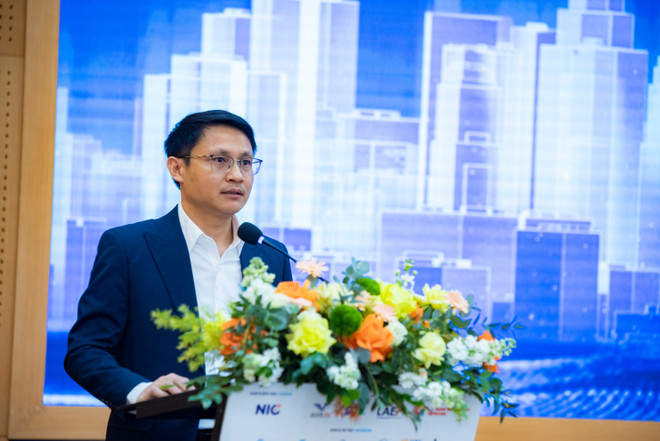
According to experts' forecasts, the global low-altitude aviation market could reach 700 billion USD by 2035. In Vietnam, this figure is estimated to have the potential to reach 10 billion USD. With the advantage of stable geopolitics, policies to encourage innovation and a young, dynamic workforce, Vietnam is facing what many experts call a "once-in-a-lifetime opportunity" to become a regional low-altitude industrial center.
Sharing about this vision, Ms. Nguyen Thi Hai Hang, Vice President of AUVS VN Network, Director of Vietnam Aviation Academy, said that low-altitude economy is not simply about flying vehicles, but also a strategic shift to open low airspace as a new business space, promoting economic growth through technological innovation.
Specifically, the applications of the low-level economy are extremely diverse, from smart agriculture, delivery logistics, environmental and infrastructure monitoring, disaster relief to tourism and entertainment. The outstanding benefits that this technology brings, such as increasing speed, reducing operating costs, improving labor safety and providing accurate data for instant decision making.
At the national level, Mr. Tran Anh Tuan, Executive Director of the AUVS VN Network, affirmed that the low-end economy has a strategic role, is a new growth driver, a bridge for digital transformation, creates high-quality jobs and enhances national capacity.

"Low-level economy is not only a technological trend, but also a national development strategy, converging three core values: Innovation, high productivity and sustainable development," said Mr. Tuan.
Security challenges and air traffic problems
To turn potential into reality, experts agree that Vietnam needs a clear development roadmap.
Accordingly, Mr. Tran Anh Tuan proposed 5 key solutions, including building a flexible legal corridor, focusing on domestic research and development (R&D) investment, developing low-level economic industrial clusters and testing centers, training high-quality human resources and building a comprehensive connected ecosystem.
From the perspective of a technology corporation, Mr. Vu Anh Tu, Chief Technology Officer of FPT Corporation, likened the low-end economy to a new growth engine, where Vietnam can take advantage of its intellectual and technological advantages. This is where Vietnam can take off with intelligence, technology and multi-dimensional cooperation between the State-Enterprise-School-Institute-People.
“Seizing opportunities and investing in the low-end economy, we are promoting all three pillars of the new era: digital economy, green economy, knowledge economy, and at the same time awakening the creative potential of Vietnamese engineers and scientists,” said Mr. Tu.
Along with the enormous opportunities, the explosive growth of drones also poses non-traditional security challenges.
Dr. Nguyen Thanh from the Institute of Posts and Telecommunications Research gave a frank warning perspective: "Drones/UAVs are increasingly popular not only in civilian use but also abused for war, terrorism, and transporting contraband. The flexible orbital characteristics, difficulty in managing ownership and diverse purposes of use make it difficult for current authorities, creating a gap in supervision and management."
From that reality, Mr. Nguyen Thanh believes that building a monitoring and management system for these vehicles has become an urgent need, which needs to be deployed soon to anticipate development. He proposed establishing a specialized force similar to "air traffic police", equipped with modern technology to monitor and enforce the law in low-altitude airspace.
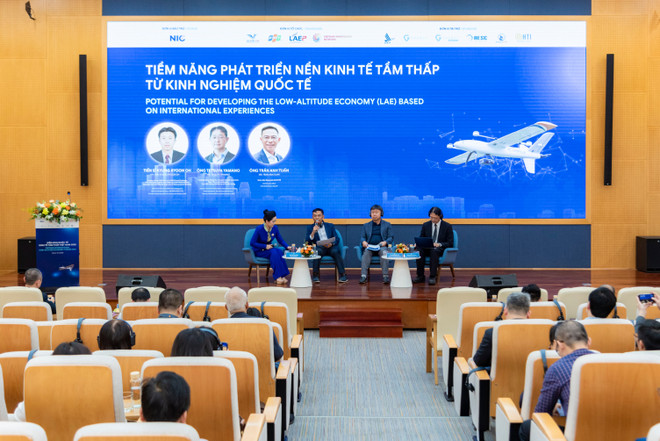
This model will operate based on a National Drone Monitoring and Management System. Accordingly, legal flying vehicles will be registered, issued "electronic license plates" and equipped with 4G/5G modules to declare schedules and locations in real time. In parallel, a low-altitude radar network will be deployed in key areas to detect and compare, thereby identifying illegal flying vehicles. The system also includes "soft" (jamming, forced landing) and "hard" (physically disabling) suppression devices to handle threats.
Accordingly, Mr. Nguyen Thanh proposed a detailed roadmap for the pilot phase before 2028, deployed in important central-level areas before 2030 and gradually expanded to provincial and commune levels by 2035.
The forum also noted many policy proposals in building a sandbox policy framework, developing low-altitude airspace management infrastructure, and promoting research and production of unmanned aerial vehicles (UAV/UAM) to serve socio-economic fields to open up a new direction for the country in the era of low-altitude aviation, creating a platform to connect resources, share knowledge and promote the application of modern technologies./.
About AUVS VN Network:
On August 25, 2025, the Innovation and Expert Network of Aviation, Space, Unmanned Aerial Vehicles (AUVS VN) was officially announced under the auspices of the National Innovation Center .
The network has a mission to transform Vietnam from a consumer market into a manufacturing and innovative country, playing an important role in the global value chain of the aviation and aerospace industry.
AUVS VN identifies four key strategies, including perfecting the legal framework, promoting R&D investment, developing high-quality human resources, and attracting the world's leading corporations to cooperate in Vietnam.
Source: https://www.vietnamplus.vn/mo-cua-bau-troi-tam-thap-co-hoi-phat-trien-nganh-cong-nghiep-10-ty-usd-post1076961.vnp



![[Photo] Unique architecture of the deepest metro station in France](https://vphoto.vietnam.vn/thumb/1200x675/vietnam/resource/IMAGE/2025/11/14/1763107592365_ga-sau-nhat-nuoc-phap-duy-1-6403-jpg.webp)

![[Photo] Unique art of painting Tuong masks](https://vphoto.vietnam.vn/thumb/1200x675/vietnam/resource/IMAGE/2025/11/14/1763094089301_ndo_br_1-jpg.webp)











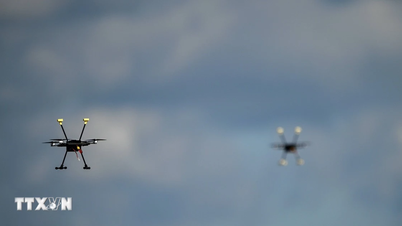


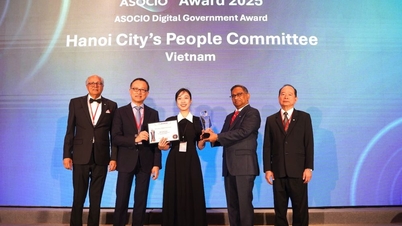

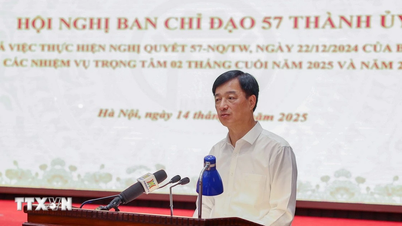








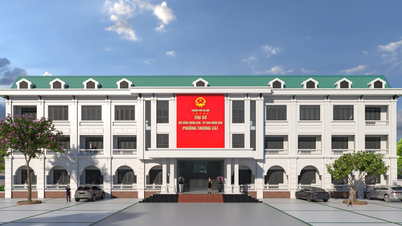



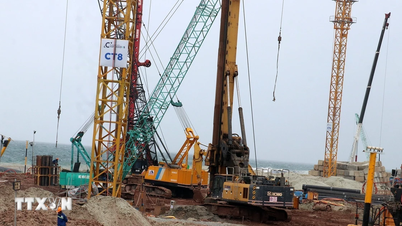


![[Photo] Special class in Tra Linh](https://vphoto.vietnam.vn/thumb/1200x675/vietnam/resource/IMAGE/2025/11/14/1763078485441_ndo_br_lop-hoc-7-jpg.webp)














































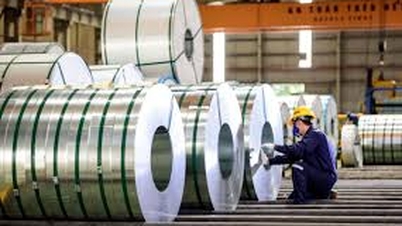


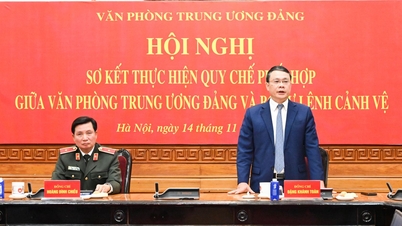




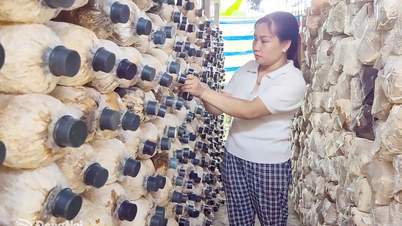



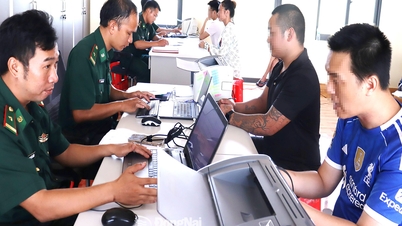
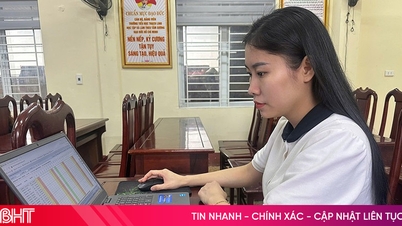














Comment (0)